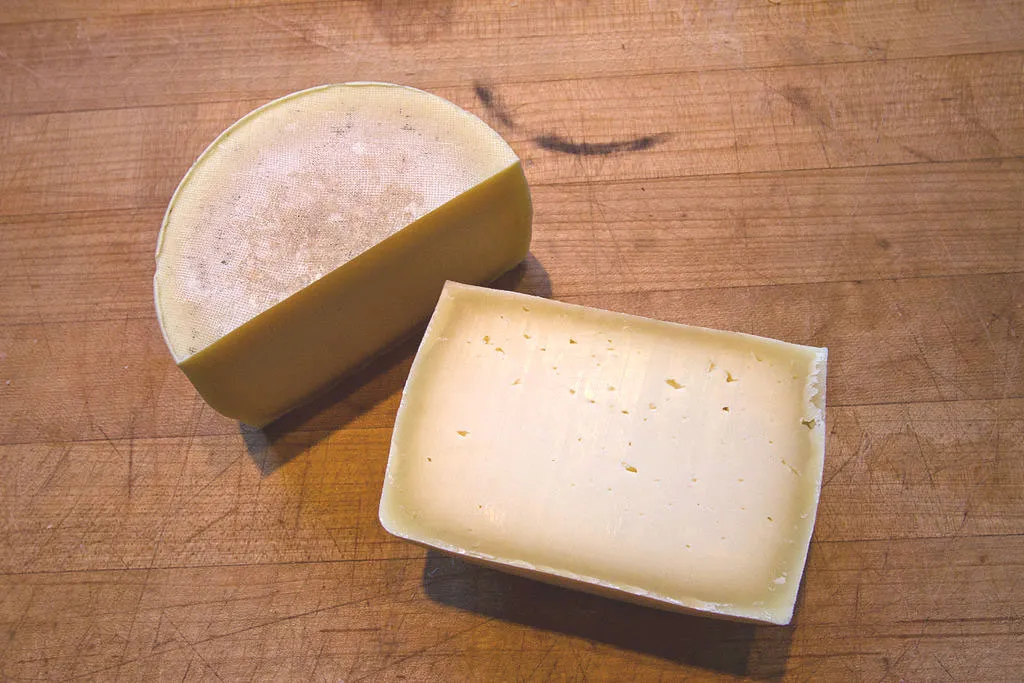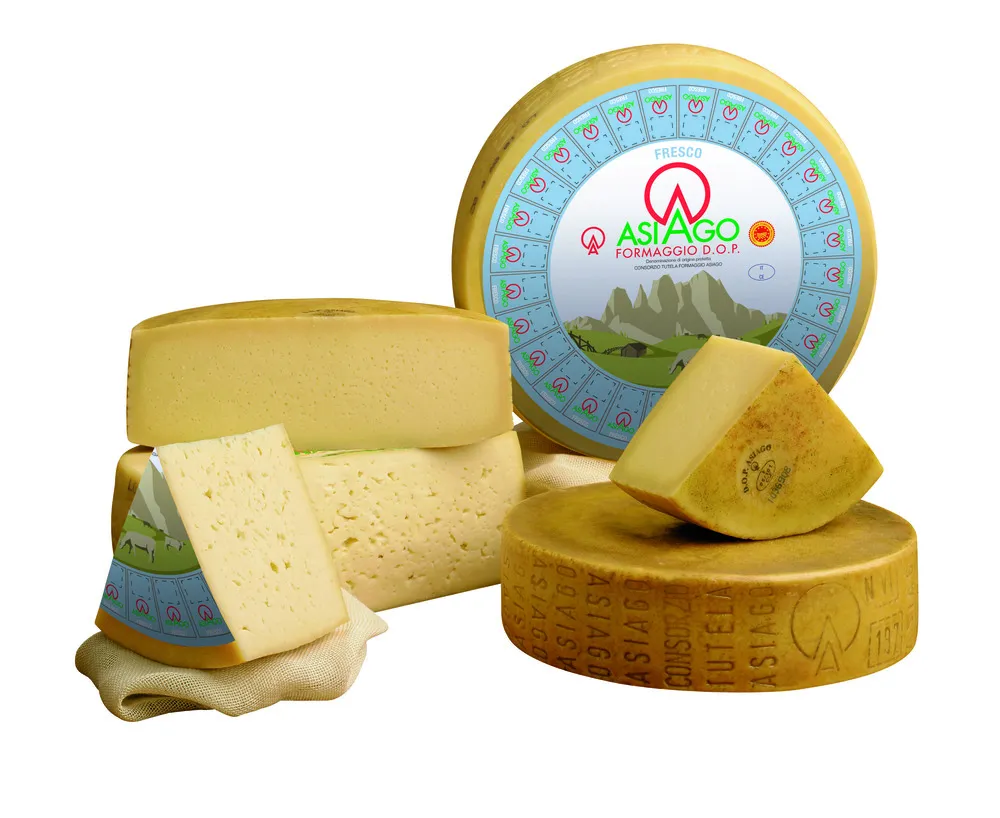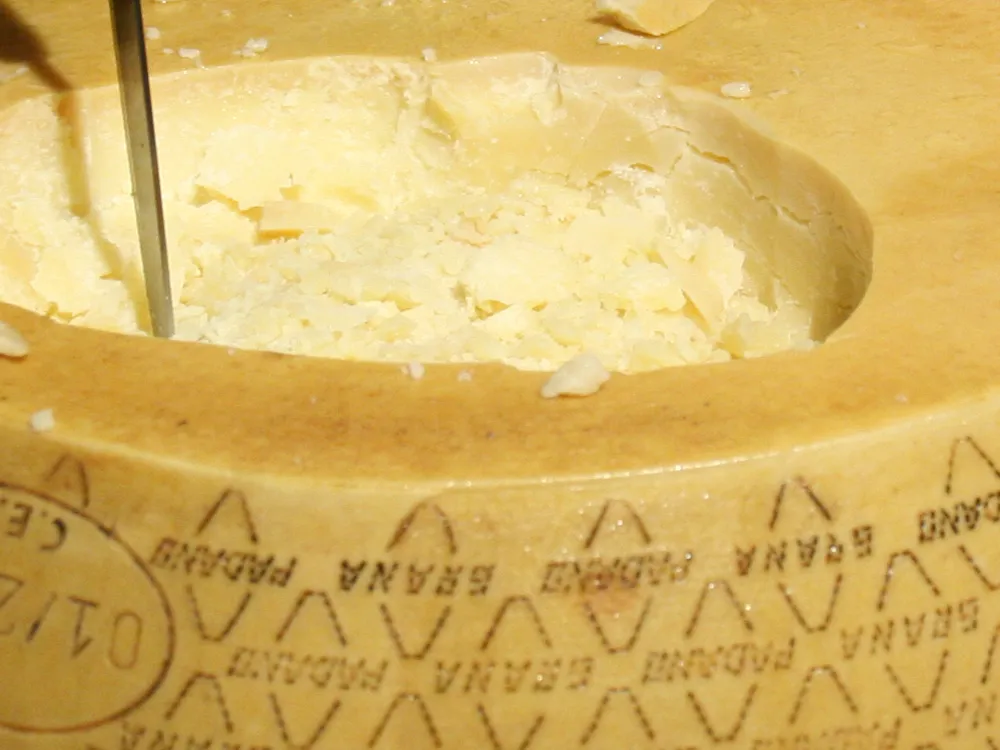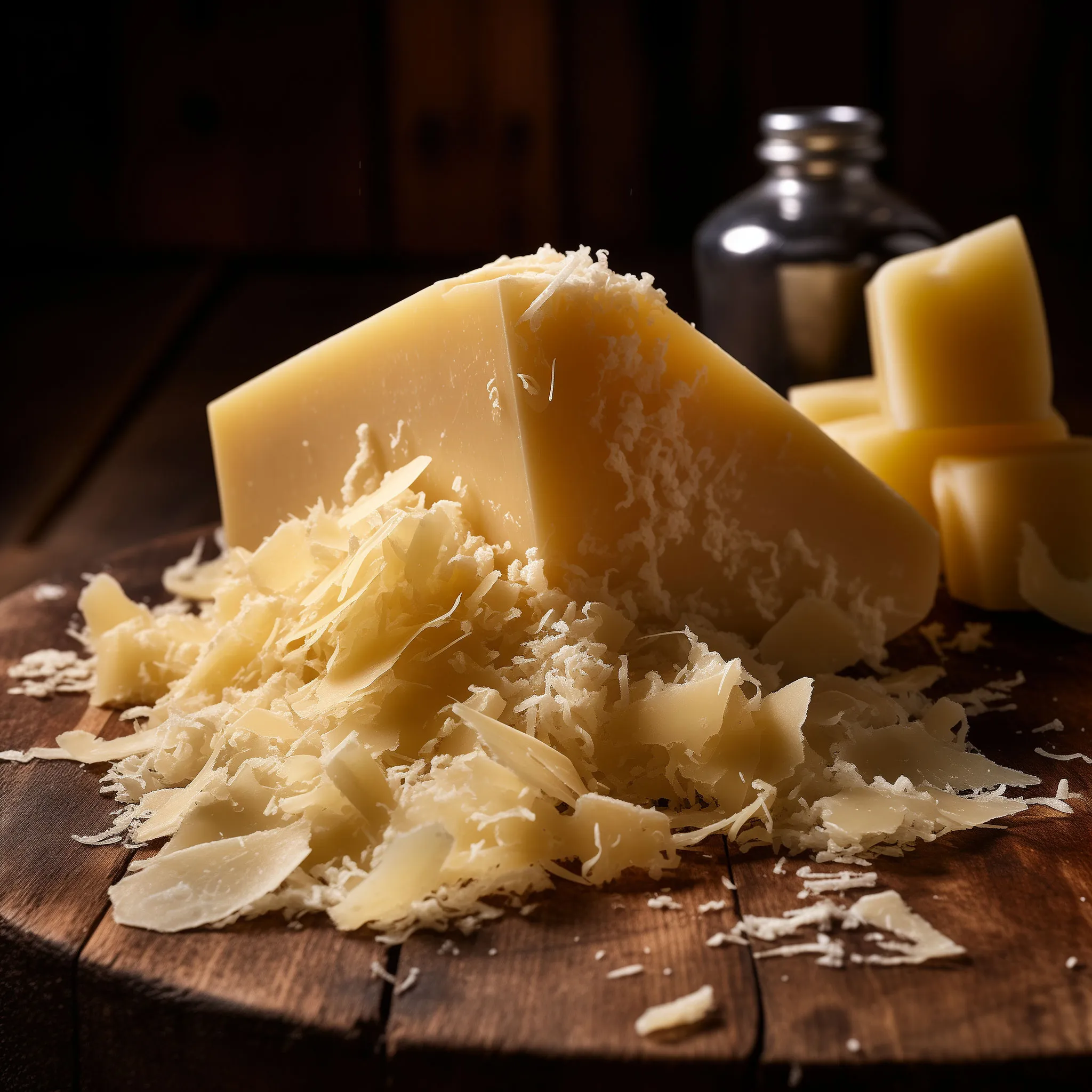Romano
What is Romano Cheese? What Does Romano Taste Like?
Romano is a hard cheese of Italian origin prepared using cow's, sheep's, or goat's milk or mixtures of two or all of these. Known for its solid and robust flavors, this cheese has been enjoyed as far back as the 1st century BCE. There are several types of Romano cheese, each of which is identified via descriptive prefixes such as Vaccino Romano (cow’s milk)or Caprino Romano (goat’s milk). The most famous example of Romano cheese is Pecorino Romano, an exclusive Italian cheese with DOP designation from the Italian government.
Romano cheese is made from pasteurized or unpasteurized milk using animal, plant, or microbial rennet. It has a grainy texture and a hard and brittle rind. The curing of Romano takes at least five months and even longer than that if it is destined for grating.
What Does Romano Cheese Taste Like?
Romano has a sharp, almost spicy, and salty taste that is instantly recognizable. The aging process contributes to its flavor development, making it stronger and more pronounced as it matures. The longer the cheese is aged, the more complex and tangy the taste becomes.
Each specific type of Romano cheese has its own peculiarities and its fronts, different shades, textures, and flavors. While the sheep’s cheese Pecorino Romano is quite tangy, the Caprino Romano – which is made from goat’s milk – has a much sharper taste. The cow’s milk, Vacchino Romano, in contrast, is very mild in flavor.
When you bite into a piece of Romano cheese, you will experience a delightful burst of flavors that linger on your palate. Its sharpness adds a bold and savory dimension to any dish it is used in. This cheese is often grated and sprinkled over pasta, salads, soups, and sauces to enhance their taste.
What is Romano Cheese Made From?
Romano cheese is primarily made from sheep's milk, although some variations, especially those made in the United States, may also be made only with cow's milk, or even with goat’s milk. Traditionally, it is produced using only sheep's milk, specifically from the Lazio region of Italy, and is called Pecorino Romano. The use of sheep's milk imparts a distinct flavor and texture to the cheese.
The process of making Romano cheese involves the curdling of the milk using rennet, which causes the proteins to coagulate and form curds. These curds are then cut, drained, and pressed to remove excess whey. Afterward, the cheese is aged for several months to develop its characteristic taste and texture.
What is Romano Cheese Used For?
Romano cheese is widely used in Italian cuisine and is a staple in many traditional recipes. Its rich and bold flavors make it an excellent choice for adding depth to dishes. It is commonly grated and used as a finishing touch on pasta, pizza, and risotto to impart a tangy kick. It is also often shaved onto cooked dishes and cream sauces, adding a rich and savory flavor.
Moreover, Romano cheese is often enjoyed on its own as a table cheese, paired with fruits, crackers, and wine such as Riesling or Prosecco.
How Long Does Romano Cheese Last?
When properly stored, Romano cheese has a relatively long shelf life. Thanks to its hard texture and low moisture content, it can last for several months without spoiling. However, its taste and texture can change over time, becoming sharper and more intense as it ages.
To keep Romano cheese fresh, it is essential to store it correctly. After purchasing, the cheese should be wrapped tightly in wax paper or aluminum foil to protect it from moisture and air. It is best stored in a cool and dry place, such as the refrigerator, which helps slow down the aging process.
As you consume Romano cheese, remember to trim off any moldy portions and store it separately from other cheeses to prevent cross-contamination.
Is Romano Cheese Healthy?
Romano cheese, like most cheeses, provides valuable nutrients and can be part of a balanced diet when consumed in moderation. It is a good source of protein, calcium, and phosphorus, which are essential for maintaining healthy bones and teeth.
However, Romano cheese is also high in sodium and saturated fat. Excessive consumption of these can contribute to health issues such as high blood pressure and elevated cholesterol levels. It is important to enjoy Romano cheese as part of a varied diet and to monitor your intake of saturated fat and sodium.
Romano Cheese Nutrition and Calories
One ounce (28 grams) of Romano cheese contains approximately 110 calories, 8 grams of fat, 9 grams of protein, and 406 milligrams of sodium. It is a relatively calorie-dense food due to its fat content, so portion control is crucial when enjoying this flavorful cheese.
Additionally, Romano cheese is a good source of vitamins A and B12. These vitamins play a vital role in various bodily functions, including immune system support and the formation of red blood cells.
Where Does Romano Cheese Come From?
Romano cheese, as its name suggests, originates from the Rome region in Italy. The traditional production of this cheese has been part of Italian culinary heritage for centuries. Its popularity has since spread to other parts of the world, and it is now enjoyed by cheese enthusiasts globally.
Authentic Romano cheese is made using time-honored methods that have been passed down from generation to generation. The craftsmanship and dedication involved in its production contribute to the exceptional quality and flavor of this beloved cheese.
Romano Cheese vs. Pecorino Romano Cheese
Romano cheese and Pecorino Romano cheese are often confused due to their similar names and flavors. However, there are two distinct types of cheese, and each is in possession of a unique set of characteristics.
While both cheeses are made from sheep's milk, the most point difference lies in their origins. Romano cheese is made primarily in the Lazio region of Italy, while Pecorino Romano cheese is produced in various regions, including Sardinia and Tuscany.
Furthermore, Pecorino Romano cheese is saltier and milder in flavor compared to Romano cheese. It is typically aged for a shorter period, resulting in a less intense taste profile. The texture of Pecorino Romano cheese is also slightly softer and more crumbly.
Both cheeses have their own merits and uses in cooking, and the choice between them depends on personal preference and the desired flavor profile for a particular dish.
In conclusion, Romano cheese is a delicious and unique cheese that adds robust flavors to various dishes. Its sharpness and saltiness make it a favorite among cheese lovers who crave a bold taste experience. Whether sprinkled over pasta, melted into sauces, or enjoyed on its own, Romano cheese never fails to delight the taste buds with its distinct flavor. So next time you're in search of a cheese that brings a burst of savory goodness, give Romano cheese a try and savor the delightful taste of Italy!

Over 200,000 page views per month, Put your store on our map!
Contact UsOther Italian cheeses:
Romano cheese is a famous Italian cheese known for its sharp and tangy flavor. It is often used in pasta dishes, salads, and as a topping for pizzas. However, there may be times when you run out of Romano cheese or simply want to try something different. Luckily, several substitutes …
Read MoreRomano Q & A
-
Is Romano Cheese Lactose-Free?
Romano cheese, like most aged cheeses, contains very little lactose. Through the cheese-making process, the lactose in milk is …
Read More -
Is Romano Cheese Vegetarian?
In most instances, Romano cheese is not vegetarian-friendly. i
Many cheeses are made with microbial or vegetable rennet …
Read More -
Is Romano Cheese Gluten-Free?
If you follow a gluten-free diet, you'll be pleased to know that Romano cheese is generally considered gluten-free. Made …
Read More -
Does Romano Cheese Melt?
Many cheeses are known for their melting capabilities, but Romano cheese is not one of them. Romano is a …
Read More -
How To Store Romano Cheese
To prolong the freshness and quality of Romano cheese, proper storage is key. After opening the packaging, it's crucial …
Read More -
How Long Can Romano Cheese Sit Out?
Romano cheese, like all cheeses, should not be left sitting out at room temperature for an extended period. Cheese …
Read More -
Can Dogs Eat Romano Cheese?
Dogs can also enjoy Romano cheese as an occasional treat. However, it's important to note that cheese, including Romano …
Read More -
Can Cats Eat Romano Cheese?
Cats are obligate carnivores and don't require cheese in their diet; even so, small amounts of Romano cheese can …
Read More -
Can You Eat Romano Cheese While Pregnant?
Romano cheese is only safe to eat while pregnant if it is made from pasteurized milk. Pasteurization kills harmful …
Read More






